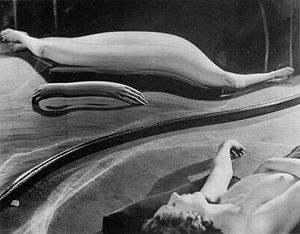Animals remember past events in their lives
“Let’s see if you bastards can do ninety.” And with that, the DeLorean accelerated forwards and traveled back in time thirty years.
Unfortunately, in life outside Back to the Future?, we do not yet have the option of time travel. The closest thing we have at the moment is mental time travel. As humans, we have the ability to let our minds wander back in time to an experience of our choice, whether it be thirty years, or thirty minutes.
The ability to remember a particular event or episode (so-called ‘episodic memory’) is not the only type of memory we have. We also have memory of facts of the world, for example, ‘the sky is blue’, or ‘Jack Bauer? is a hard man’, without having a specific episode in mind – we just seem to know it.
Episodic memory is considered to be a key aspect of our consciousness. Indeed we find it difficult to imagine being ourselves without our personal memories. This topic has not only captivated philosophers and science fiction writers; it is also a large field in science. One area has been to try and learn whether other animals apart from humans have memories of past events in their lives. Apart from it being an interesting question in itself, knowing this could help us better appreciate human episodic memory, and aid our understanding of diseases which affect it (like Alzheimer’s).
But how do we go about finding out if other animals remember events from their past? In humans, we have a simple way of doing this: we ask. Unfortunately with non-human animals it is not so easy. First, we have to think about what specifically we mean by an ‘episodic memory’. Endel Tulving?, the godfather of episodic memory, said that it was a form of consciousness that allows people to think about the subjective time in which they live and ‘mentally travel’ in that time. Unfortunately this definition is somewhat futile when coming to test it in other animals. More recently two scientists, Nicola Clayton and Anthony Dickinson, proposed a new definition of episodic memory in order to look for it in non-human animals. This definition was that the behaviour would have to fit three criteria: the animal must have the ability to recall ‘what, where and when’; to integrate this information; and then deploy this information flexibly.
As this is quite a lot of information to take in in one go, let us break down that last sentence. Firstly, when we recall a memory from our past, say, our first date, the key components of that memory are ‘what’, ‘where’ and ‘when’. The ‘when’ part of the memory would be, say, fifteen years ago. The ‘where’ part of the memory might be an ice cream parlour (yes I am lapsing into an American Hollywood movie cliché). And perhaps the ‘what’ part of the memory is that the date was really awkward and it finished with you concluding that the opposite sex were not all they were cracked up to be. However, we don’t recall these three separate pieces of information as separate entities: they are all integrated as a whole.
This brings us to the second of Clayton and Dickinson’s criteria that an episodic memory has to fulfill: the memory must be an integrated whole (not just where and when it was, or what and where it was). The final criterion an episodic memory must adhere to is that it must be able to be deployed flexibly in new situations. For example, we can recall an event from the past, and use that information to apply it to a new situation given our current knowledge about the world. This is something we do countless times a day, perhaps without even realizing it.










